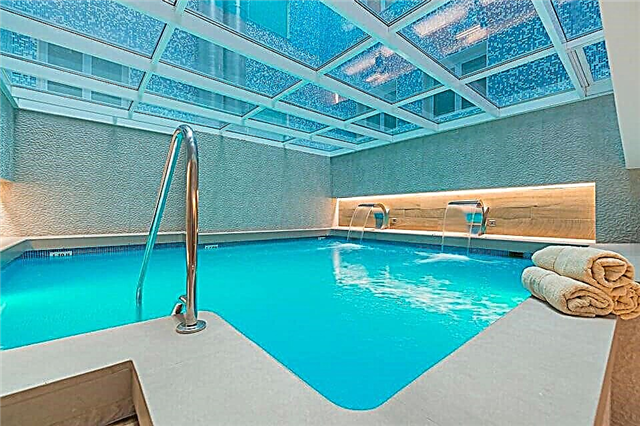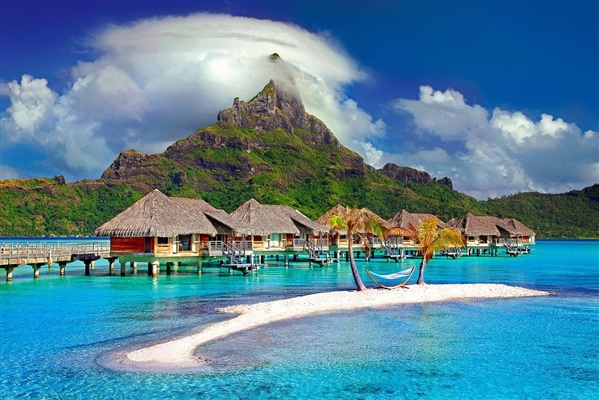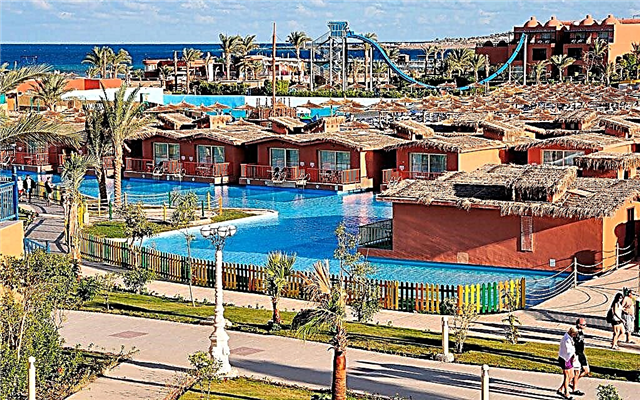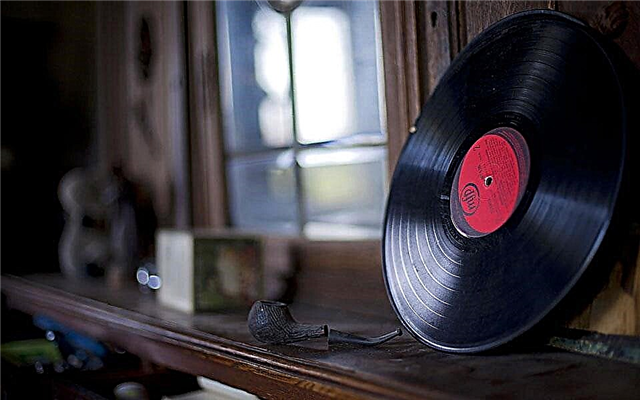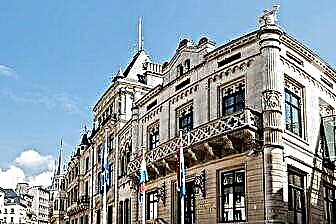The Grand Duchy of Luxembourg is a small state in western Europe. A high level of security, a pleasant temperate climate, many attractions for every taste, original local cuisine and comfortable hotels - Luxembourg can provide its guests with all this.
The old quarters of the capital, as well as the ancient castles of the state, such as Vianden, Larochette and Beaufort, will appeal to lovers of antiquity. Luxembourgish Switzerland and the Haute Sur National Park offer tourists to spend their holidays actively, and at the same time admire the amazing natural beauty.
For tourists who prefer organized excursions, it will be interesting to visit the historical or art museums. Tours to the Moselle Valley will reveal the secret of the production of world famous wines.
It is also definitely worth trying the national cuisine, the most original dish of which is the roast hare. As a souvenir, something tasty is usually brought from Luxembourg - sweets, Ardennes ham, chocolate or local wine.

The best hotels and hotels at affordable prices.
from 500 rubles / day
What to see in Luxembourg?
The most interesting and beautiful places, photos and a short description.
The old quarters and fortifications of the city of Luxembourg
The Alzet River divides Luxembourg into an Upper and a Lower City. The old quarters and fortifications, included in the UNESCO World Heritage List, are located in Upper Luxembourg. Here you can climb the wall of one of the fortifications, or visit the Bock casemates, which are well preserved and open to tourists.

Place Guillaume II
A popular and lively place in Luxembourg, Place Guillaume II, is located on the site of a Franciscan monastery, which was destroyed in 1829. In the center of the square, Duke Guillaume II is immortalized on horseback. On weekends, a market is located on the square, and on holidays, a stage is set up for performances.

Berg Castle
The main active residence of the Luxembourg Grand Dukes is Colmar-Berg Castle Berg. Back in the 19th century, this building was the residence of the ruling governors, but at the end of World War II, the castle had to be restored. Since 1964, the Berg residence has again become home to the Grand Duke of Luxembourg.

Moselle river valley
The Moselle River is one of the main in Luxembourg, its valley is a wine region. World famous wines and liqueurs are produced here. Also in the valley of the Moselle there is a popular tourist route "Wine Trail", following which you can visit distilleries, wine cellars and tasting rooms.

Monument "Golden Lady"
In the very center of Upper Luxembourg, on the Constitution Square, there is a famous military monument "Golden Lady" with a height of 21 meters. This structure was erected in 1923 to honor the memory of those brave residents of the city who volunteered for the Luxembourg armed forces during the First World War.

Vianden city and castle
One of the most beautiful European buildings, Vianden Castle, is located in the picturesque town of the same name. At one time the city was visited by Victor Hugo and Elizabeth II. The local castle was built in the period from the 11th to the 14th century, and during its long history it has experienced many destruction. In 1977, Vianden Castle was finally restored and opened to tourists.

Park Merveyer
The most visited place in Luxembourg is the Merveillier amusement park. It is located near Bettambour and is open to the public from April to October. There are many attractions for children and a small zoo. Merveilles also hosts a variety of fairytale performances.

Mamer Castle
Although the Mamer Castle was built in the distant X century, even today this structure is useful. The administrative authorities of the Mamer commune are located here. The castle is located in the very center of the city on Independence Square and includes four buildings that make up a single architectural ensemble.

Luxembourg City Tram and Bus Museum
In the southwestern part of the city of Luxembourg, there is a public transport museum, the first exhibits of which began to be collected back in the 60s. Today the collection consists of restored tram cars, a replica of a horse-drawn carriage and two buses. Also on display are samples of service uniforms, travel tickets, documents and photographs.

Luxembourg Switzerland
A small area in the east of the country got its name from the similarity of the local landscape with the Swiss mountains. The rocks of Luxembourgish Switzerland were created from sandstone during the Ice Age. Several picturesque rivers flow in this area, as well as the oldest city of Luxembourg, Echternach.

Adolphe bridge
One of the most graceful bridges in the country, and also the national symbol of Luxembourg. This structure, the first stone of which was laid in 1900 by the Grand Duke Adolf himself, connects the Upper and Lower cities. In the evenings, the vaults of the Adolf Bridge are decorated with illumination.

Larochette
The small town of Larochette is surrounded by rocky slopes, on one of which is an ancient castle of the XI century. Since the 13th century, a large family of von Fels, the standard-bearers of Luxembourg, lived here. In 1565, the castle of Larochette burned down in a great fire and for a long time no one lived in it. After the restoration work carried out, the castle was opened to tourists.

Notre Dame Cathedral
The main church of the capital, the Roman Catholic Cathedral of Our Lady of Luxembourg, is located in the southern part of the city. The building was built in the 17th century as a Jesuit church, but a century later the cathedral was transferred to the Luxembourg parish. Externally, the church is made in the Gothic style, and the interior decoration has features of the Renaissance. The miraculous wooden image of the Mother of God with the baby Jesus in her arms is kept here.

Walferdange village and castle
In the town of Walferdange there is a castle of the same name, erected in 1824. The Grand Duke Wilhelm I built it as a stud farm for breeding horses, and his son Wilhelm II turned the building into a royal residence. Now the castle houses one of the campuses of the University of Luxembourg. In addition to the castle in Walferdange, you can see a Roman villa and an underground water conduit.

Fortress "Three acorns"
The Three Acorns Fortress is located in the park of the same name in the southeastern part of the city. Once the towers of this fortress were part of a powerful fort, built in 1732 to defend the city. In 1867 the fortress was completely destroyed. After restoration, within the walls of the fortress, the Tungen Museum is located, dedicated to the history of this building.

Haute-sur National Park
Established in 1999, Haute Sur National Park is located northwest of Esling. Here plants and animals are protected, as well as the purity of the water in the local lake and reservoir is monitored. In Haute-sur, you can go in for water sports, see local architectural monuments, and also stay in comfortable houses for several days.

Bock casemates
The tunnels and chambers that make up the Bock casemates built in the 17th century are protected by UNESCO. They are located in the very center of Luxembourg, in the thickness of the Le Bock cliff under the now destroyed Luxembourg fortress. A tour of the casemates includes a visit to the archaeological crypt, where the most interesting local finds are exhibited.

Resort Mondorf-les-Bains
The small town of Mondorf-les-Bains, located in the south-east of Luxembourg, has been famous for its thermal springs since the early 19th century.The mild local climate and healing mineral springs, the temperature of which is always kept within 25 degrees, attract many tourists from all over the world. Various diseases of internal organs are treated here, as well as rheumatism.

Palace of the Grand Dukes
The building of the Palace of the Grand Dukes was built in the 16th century, when a large explosion of a powder store destroyed almost the entire Upper Town. Initially, the palace was used for administrative needs, and in 1890 the Grand Duke Adolf announced this building as his residence. Today the palace is used as a study for official receptions and audiences.

Beaufort Castle
Beaufort Castle is located in the town of the same name in the east of the country. In the 11th century, on the site of the present castle, there was a simple defensive fortress, which later turned into a powerful fortification. Today, the Beaufort prison with an equipped torture chamber is offered for inspection, as well as the Main Tower of the castle, which offers an excellent view of the city.

Echternach Abbey
The oldest city in Luxembourg is known for its abbey, founded by the Benedictine Willibrord in the 7th century. The retreating Germans in 1944 destroyed the entire monastery complex, after which it was rebuilt. Echternach Abbey is famous all over the world for its annual dance procession.

Bourscheid Castle
Luxembourg's largest castle rises above the Sur River near Ettelbrook. The first mention of the castle dates back to the X century. Subsequently, the building was rebuilt more than once, and at the beginning of the 19th century, due to the death of the owner, the castle began to collapse. In 1936, Burscheid was recognized as state property, and after the reconstruction began in 1972, the castle was opened to tourists.

Grevenmacher butterfly garden
The butterfly garden was first opened in 1989. Located in Grevenmacher, Luxembourg's wine region, this garden covers an area of over 600 m2 and attracts many tourists from all over the world every year. In addition to butterflies, of which there are more than 50 species, in the garden you can see chameleons, bees and turtles. The garden is open to visitors from April to October.


